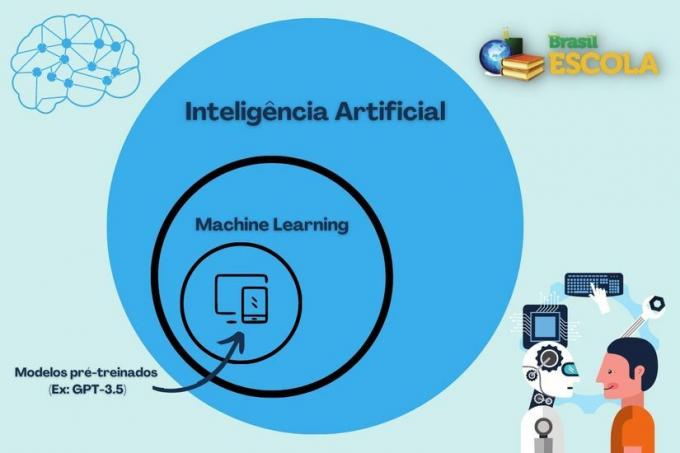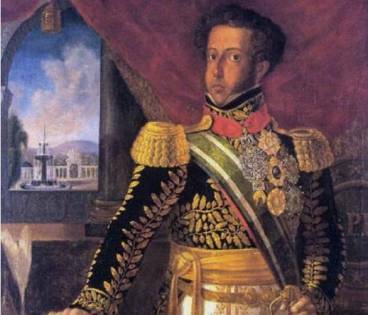A artificial intelligence (AI) has increasingly gained space in human life. New technologies in this field demonstrate capabilities that years ago were not possible.
One of the AI tools that stands out for its potential is the Generative Pre-trained Transformer (GPT), an algorithm capable of generating different types of information and answering different questions from many areas.
The GPT-3 model is capable of writing texts that can be confused with textual productions made by human beings.
What is Artificial Intelligence?
A artificial intelligence can be defined as the ability of a machine to perform a certain task considered intelligent.
This means that to perform this task it is necessary to analyze information and make a decision about it. information, conceptualizes Professor Dr. Anderson Soares, coordinator of the Artificial Intelligence course at the Federal University from Goiás (UFG).
Within the universe of AI there is the machine learning. It is a process of learning from data. Professor Anderson exemplifies: in order to teach the machine what a dog is, it is necessary to show it a variety of images that represent dogs.

The GPT-3 model
According to Anderson Soares, one of the main functions of artificial intelligence tools until then was to classify objects. With the GPT-3 model, it was possible to generate and produce information from an algorithm.
Professor Dr. Paulo Boa Sorte, from the Federal University of Sergipe (UFS), explains what GPT is and how it works in the video below:
A company responsible for GPT is OpenAI which is owned by Elon Musk. It is an artificial intelligence research organization of the U.S.
There are three versions of GPT. The first was released in 2008, the second in 2019 and the third in 2020.
GPT-3, the most recent version, relies on the use of 175 billion parameters in its programming structure. The second version had 1.5 billion parameters.
These parameters are related to the variables in the programming, explains Professor Paulo. "For the machine to learn what an apple is, for example, it needs to be taught about all the possibilities, such as the red apple and the green apple. These variables are related to machine learning parameters in artificial intelligence", says the educator.
To get an idea the human brain it has the capacity to perform 100 trillion synapses, which represents a potential 570 times greater than the GPT-3 model.
These tools have advanced exponentially. Experts point out that in a few years they can reach the potential of the human brain or even exceed it.
Check out some GPT-3 features:
Write complete texts on various topics;
Write poems and songs;
Create interfaces;
Write emails;
Schedule;
Translate texts;
Answering questions like "why are buns usually fluffy?"
ChatGPT, launched in November 2022, "works like a robot that interacts very quickly on the most diverse topics, sounding more human", explains Paulo.
"The GPT-3 presents a new dimension to the universe of writing algorithms, as it covers a variety of textual genres and vocabularies, thanks to an expanded scale database. In addition, the algorithm brings the possibility of referencing citations, which demands, as in any academic production, several reflections and extreme caution" - Prof. doctor Paul Good Luck.
See too: how robot championships work
Artificial intelligence and education
The development and improvement of artificial intelligence technologies are factors that cross human reality, and consequently the field of education.
Professor Dr. Paulo Boa Sorte coordinates the TECLA (Technologies, Education and Applied Linguistics) research group at UFS.
Paulo reports that in the research carried out in this group, it has been found that the GPT "makes us rethink concepts such as creativity, intellectual property and authorship".
"It is worth asking, in this sense, to whom these texts belong and in what contexts would we be authorized to use algorithmic models capable of producing literary and academic texts, operating manuals, among others." - Prof. doctor Paulo Good Luck
According to Paulo, several discussions have already been generated and space is needed for debate in his perspective. "We need, more than ever, to talk about plagiarism, copyright and access to cultural assets", reinforces.
Among the positive aspects of GPT-3, Paulo mentions performing specific tasks, such as translation. As for the negative points, "the great challenge involves ethical issues, especially when talking about plagiarism and the spread of fake news. As data is collected from what is present on the network, algorithms can reproduce racist, sexist, LGBTphobic, unethical content, and so on, "he argues.
Know more: what are fake news?
The implementation of AI in the education universe is still shy, classic and conservative, according to Anderson Soares.

Credit: Personal Collection
Professor Anderson considers that the era of content teaching was already threatened with the advent of digital technologies. In his perspective, the role of educators will be redefined according to reality, as a facilitator, an inspirer. He believes that there will be a significant change in the teacher-student relationship.
"Like any tool, this can be used for good and for bad. It is necessary to prepare for the era when the general public will have access to voice cloning tools, photo synthesis, artificial videos. Society must be more educated and trained in terms of misinformation and the use of technologies and to have more elaborate critical thinking about what reaches them."
Professor Dr. Anderson Soares.
As to contributions of AI technologies in the teaching and learning process, Professor Paulo Boa Sorte highlights:
"To the teacher, I can cite the automation of bureaucratic processes as a great contribution. We will spend less time taking care of bureaucratic aspects of the school and we will be able to dedicate ourselves to what really matters, such as class preparation, attention to students and their possible learning difficulties. learning."
for the student, we have some trends, such as virtual, augmented and mixed reality (another project that my group develops with teachers from the state network of Sergipe), cloud computing or gamification."
Prof. doctor Paulo Good Luck
The UFS researcher considers that in the Brazilian reality there are two major challenges in the implementation of AI in schools.
O access to resources and materials. As for the first one, he considers that progress has already been made, as there are initiatives by the government in technologies, such as the ProInfo and UCA (One Computer per Student) programs.
The other challenge, which is more difficult to overcome in Paulo's opinion, is the teacher training to work with these technologies. "It's no use equipping schools and not offering training beyond technique. There is no point in transferring to the canvas what can easily be done with pen and paper. The way we conducted teaching activities during the pandemic is proof of that", says the educator.

Credit: Shutterstock
Paulo Boa Sorte says that it is necessary to bear in mind that AI technologies, such as GPT and ChatGPT, are machines that "all the data delivered by them is data that already exists and has been entered by us in the networks. That means there's no way for the machine to think new things, ask questions or make discoveries."
In this sense, AI does not innovate like the scientific initiatives carried out by researchers at universities and research institutes, argues the professor.
"In education, we will only advance when we ask questions. The old saying goes: questions are what move the world, and I think we are a long way from seeing AI do that", concludes Paulo.
Do not stop now... There's more after the publicity ;)
Check out how the higher education in Artificial Intelligence:
By Lucas Afonso
Journalist



